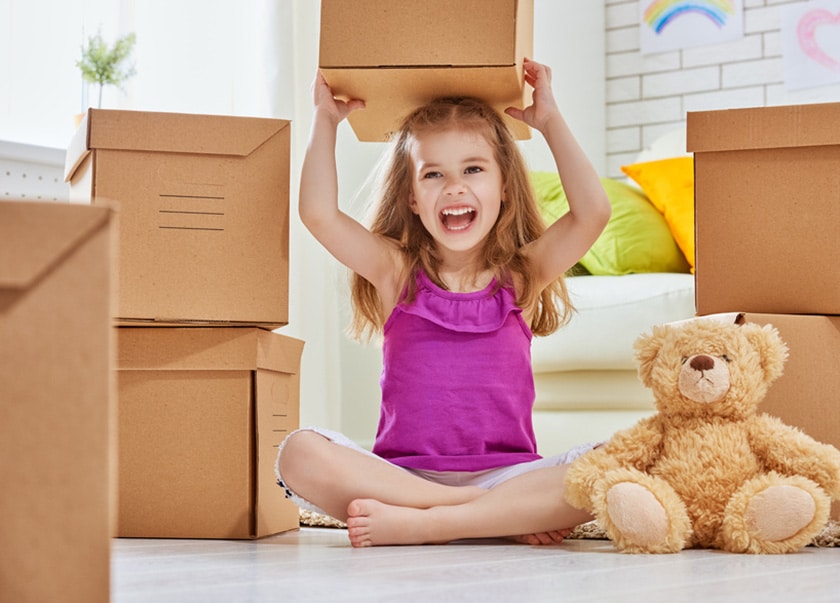Moving can be stressful: the myriad of details, the emotional strain of packing all your belongings, saying good-bye to friends, maybe starting a new job. It’s tough enough for adults let alone a large family with young children.
Although there are many challenges, moving can be an exciting adventure for your kids. What follows are some key tips to get your kids excited and ready for your big move.
Old World vs. New World
New surroundings can intimidate children. Parents can minimise that fear by taking them to their new home and getting them familiar with their new life. Specifically, you can show them where their toys and belongings fit in to their new home.
Help them visualize playing fetch with their pooch in their new bigger back yard. If your family traditionally planted a garden, show them a place where one would transfer to their new home. Minimalising the unknown will reduce the stress when transitioning to a new home.
Point Out Features Unique to Their New Neighborhood
Your children have gotten used to a life with a specific routine, and characteristics and personality. Show them how their new home will not only offer familiar traits, but upgrades as well. For example, maybe their new neighborhood includes a biking or hiking trail, or perhaps a nice park is part of the new neighborhood package.
An area where similarly-aged kids live is a big plus too. Any improvement or upgrade will give your kids an idea that they will get a greater enjoyment in their new surroundings. Even something simple like a larger closet or bedroom can be a great selling point for a child.
Make Sure the Kids Have Some Control Over the Move
Frequently, the kids are usually shut out of the decision to move. This puts them in the position of feeling they have no control over their future. Maybe the hardest part of moving for kids is the sense of losing control over their lives.
Initially at least, they will likely want to stay put. They will wonder about their new surroundings, how they will fit in at school, even question if they will make new friends. Parents know they will adapt, probably quickly, but the transformation from disruption to new routine can be streamlined if the children are given some control into their new lives.
Let them pick out some new furniture for their room or maybe some posters for their walls. If they have pets, consider getting them new homes as well. Both child and pet will then be experiencing a move of sorts, and your children can reassure their furry friends in the same way you encourage your children.
Plan a Visit to the New School
School is where children learn not just academics, but it’s also their social center, where they engage in a range of extracurricular activities, and where they make friendships, some of which can last a lifetime.
They need to be comfortable in the environment, and an early visit to the school, maybe to meet new teachers, pupils or just find out where their classrooms are located. It’s even helpful to see the parents interact with school officials. Even more beneficial, schedule a meeting with teachers and administrators, where all family members are introduced.
Remind Your Children that You are all Still a Family
Moving with kids can be overwhelming. They will need reassurances that despite their new surroundings and the feeling of temporarily being out of sorts, the important aspects of their lives will remain constant.
They will have the same toys, pets, and most importantly, the family will still be intact. Depending on the age of your children, tell them that you went through some of the same instability when you became parents, but you knew you would adapt, and now you are all better off than you ever imagined possible. They will still see relatives, and maybe even some of their old friends, and they can still play the same games.
Moving with kids brings up a variety of emotions: excitement, angst, uncertainty, frustration, maybe even occasional angry patches. As everyone adjusts to the new environment, those emotions will flatten.
New routines will take hold, new friendships established, and adaptations will be made. But the transitions for the children can be made easier with plans that include them, and making sure they are part of the entire process.
